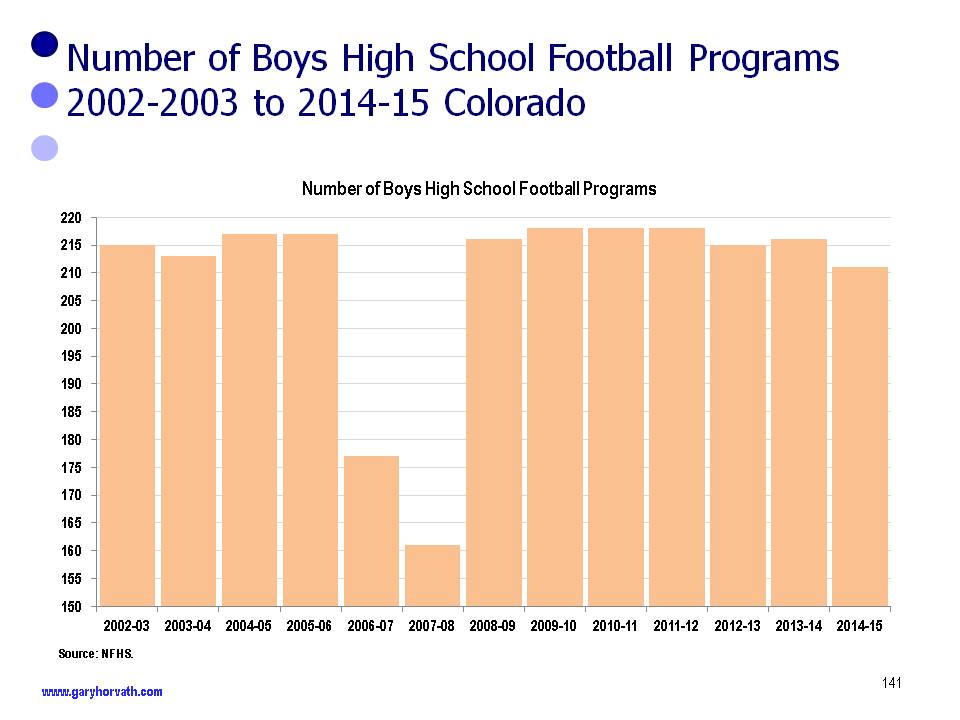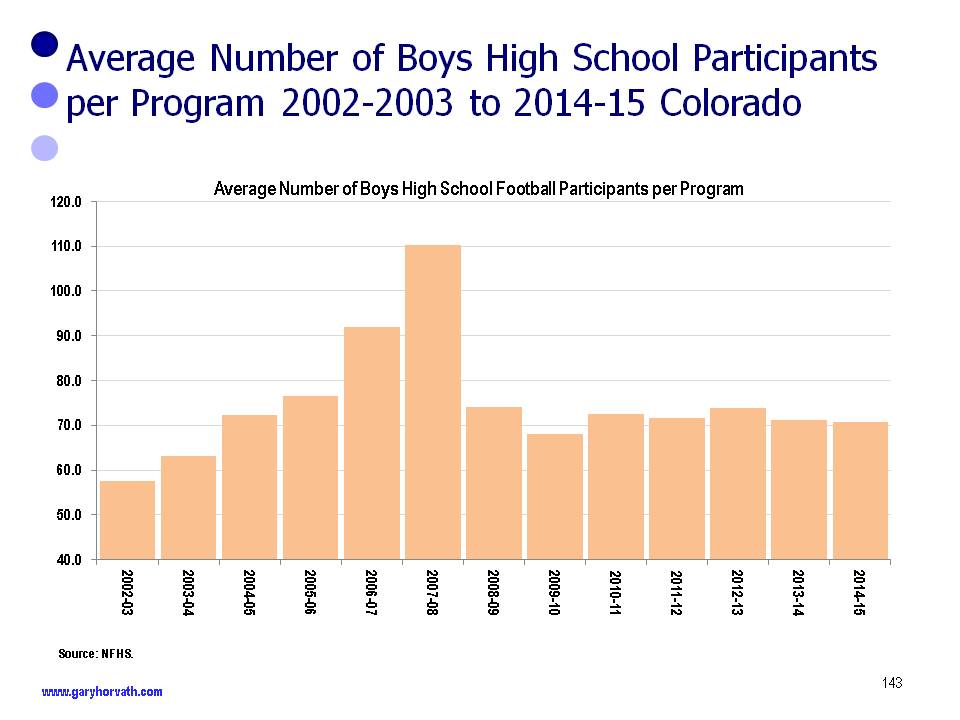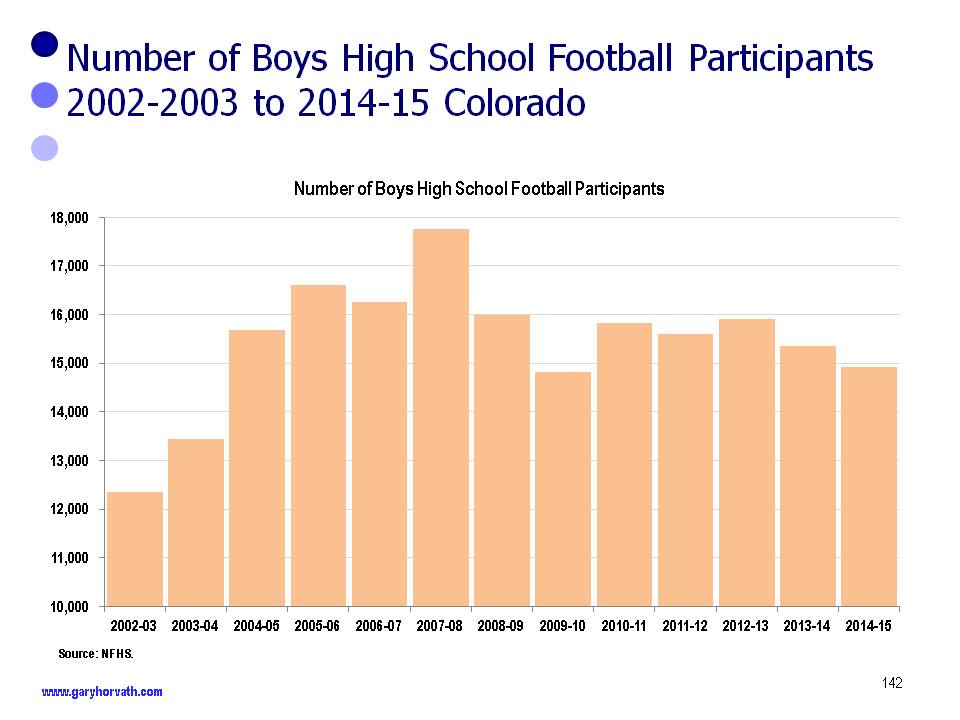Has Colorado high school football suffered because of the concussion crisis in college and professional football?
For years the National Football League denied that head trauma could have long-term consequences on its athletes. Finally in 2010, the NFL publicly admitted that many of its former players were suffering from chronic traumatic encephalopathy (CTE). In 2014, Boston University release a study showing that almost all of the brains studied tested positive for CTE.
Over the past decade the increased awareness of brain trauma and concussions has resulted in the establishment of protocol to identify when athletes have received a concussion. These protocols apply to all sports and all levels of play. As well they would apply to situations off the courts and playing fields.
In some places, reports have indicated that participation in football has resulted in a reduction in the number of football players.
Data from the NFHS shows that the concussion crisis had no impact on the number of Colorado schools with football teams. This data is for the 13 academic years beginning in 2002/2003 and ending 2014/2015. There were 215 teams in 2002/2003 and 211 teams in 2014/2015. This data does not include 8-man football teams. (The program data for 2006/2007 and 2007/2008 appears to be an aberration).
Most years, the average number of participants per program was about 70.
The number of participations reached almost 18,000 in 2007/2008, but declined sharply the next two year. In has since been in the 15,000 to 16,000 range. The fear of concussion on the number of participants appears to be temporary and minimal at this point.
The NFHS data also reported that there were about 50 girls who play high school boys football each year. On average, this means there is about one girl for every four programs.
In 2013/2015, 216 girls participated in the boys programs. The following year, that number dropped back to 35.
Despite the concussion crisis, Colorado high school football continues to be the king of adolescent sports. Its popularity will likely increase with the recent Super Bowl win by the Denver Broncos.



